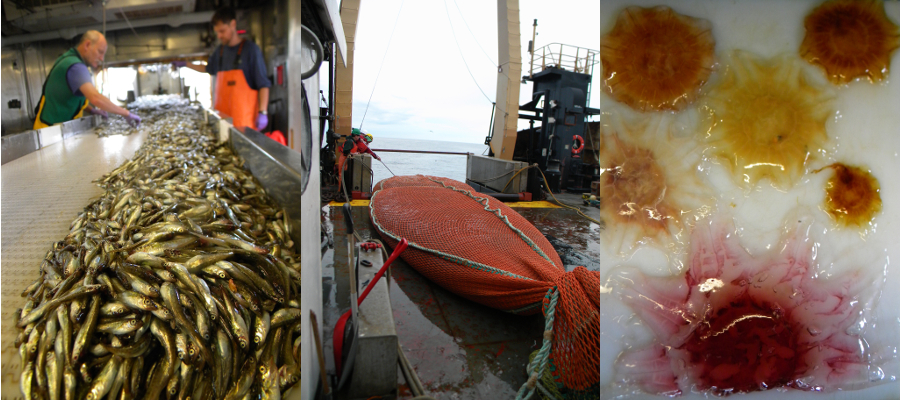Many of the world’s largest fisheries target planktivorous forage fish, which are important trophic links between plankton and upper-level consumers, such as fish, birds and mammals. Because plankton also drive jellyfish production, forage fish and jellyfish tend to overlap in space, time and diet. This overlap can lead to predatory and competitive interactions, because jellyfish feed on early-life stages of fish and zooplankton. Furthermore, the harvest of forage fish potentially releases jellyfish from competition and is hypothesized to increase jellyfish production. To understand the roles of forage fish and jellyfish, we are using ecosystem models to explore how functional group productivity is altered in various coastal ecosystems under high jellyfish and low fish harvest scenarios. We propose that ecosystem-based management of forage fish stocks include jellyfish as an independent, empirical ‘ecosystem health’ indicator.
Collaborators: Ric Brodeur (NOAA/NWFSC), Monty Graham (USM), Kelly Robinson (OSU), Jim Ruzicka (OSU/NOAA) Sponsor: Lenfest Ocean Program
